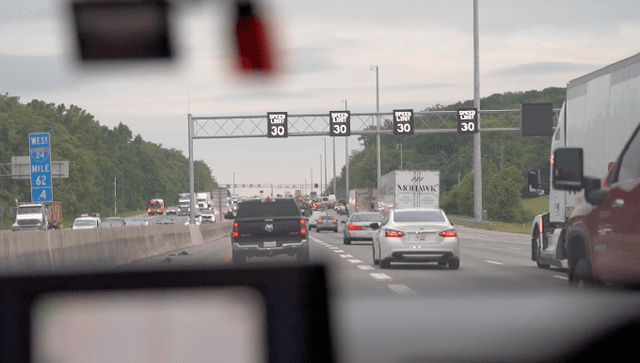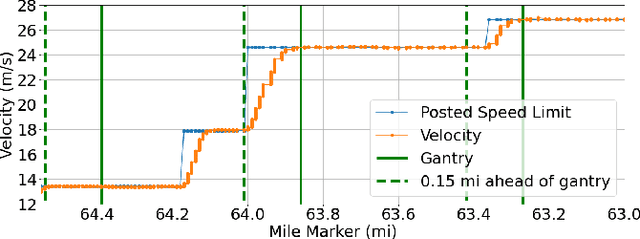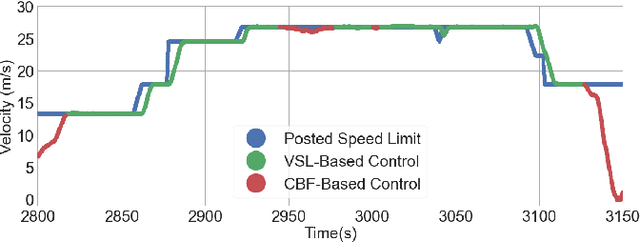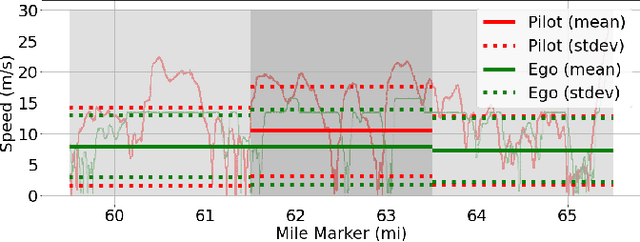George Gunter
A Middle Way to Traffic Enlightenment
Jan 29, 2024



Abstract:This paper introduces a novel approach that seeks a middle ground for traffic control in multi-lane congestion, where prevailing traffic speeds are too fast, and speed recommendations designed to dampen traffic waves are too slow. Advanced controllers that modify the speed of an automated car for wave-dampening, eco-driving, or other goals, typically are designed with forward collision safety in mind. Our approach goes further, by considering how dangerous it can be for a controller to drive so slowly relative to prevailing traffic that it creates a significant issue for safety and comfort. This paper explores open-road scenarios where large gaps between prevailing speeds and desired speeds can exist, specifically when infrastructure-based variable speed limit systems are not strictly followed at all times by other drivers. Our designed, implemented, and deployed algorithm is able to follow variable speed limits when others also follow it, avoid collisions with vehicles ahead, and adapt to prevailing traffic when other motorists are traveling well above the posted speeds. The key is to reject unsafe speed recommendations from infrastructure-based traffic smoothing systems, based on real-time local traffic conditions observed by the vehicle under control. This solution is implemented and deployed on two control vehicles in heavy multi-lane highway congestion. The results include analysis from system design, and field tests that validate the system's performance using an existing Variable Speed Limit system as the external source for speed recommendations, and the on-board sensors of a stock Toyota Rav4 for inputs that estimate the prevailing speed of traffic around the vehicle under control.
SAILing CAVs: Speed-Adaptive Infrastructure-Linked Connected and Automated Vehicles
Oct 10, 2023



Abstract:This work demonstrates a new capability in roadway control: Speed-adaptive, infrastructure-linked connected and automated vehicles. We develop and deploy a lightly modified vehicle that is able to dynamically adjust the vehicle speed in response to posted variable speed limit messages generated by the infrastructure using LTE connectivity. This work describes the open source hardware and software platform that enables integration between infrastructure-based variable posted speed limits, and existing vehicle platforms for automated control. The vehicle is deployed in heavy morning traffic on I-24 in Nashville, TN. The control vehicle follows the posted variable speed limits, resulting in as much as a 25% reduction in speed variability compared to a human-piloted vehicle in the same traffic stream.
 Add to Chrome
Add to Chrome Add to Firefox
Add to Firefox Add to Edge
Add to Edge